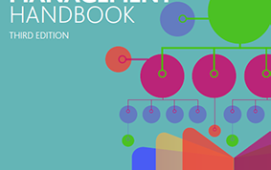
A partnership service between sustainability technology platform Clarity AI and impact data intelligence provider GIST Impact is among new biodiversity tools unveiled for financial institutions in the past week.
They join S&P Global unit Sustainable 1, which has taken the sheets off a new dataset that helps investors track the nature-based impact and dependencies of their portfolios.
New York-based Clarity AI and Nyon, Switzerland-headquartered GIST have partnered to develop a biodiversity impact tool. It combines the former’s database, which covers the ESG performances of more than 30,000 companies, with GIST’s metrics and analytics.
The service will help clients identify and calculate their exposure to companies that have a negative impact on biodiversity.
S&P Sustainable1, meanwhile, has launched its Nature & Biodiversity Risk dataset, which covers 17,000 companies and more than 1.6 million assets. It includes new nature-related risk metrics, among which is a dependency score and ecosystem footprint gauge that gives clients greater visibility into a company or asset’s dependency and impact on nature.
Biodiversity is a fast-growing segment of the ESG investment market, with associated funds attracting more than US$1 billion this year, according to Clarity AI.
“The imperative for investors to account for biodiversity impacts in their decision-making has never been greater,” said Pavan Sukhdev, founder and chief executive of GIST Impact. “This data is critical for effective risk management, and to support action to curb further nature loss.”
S&P said its dataset had already given context to the importance of biodiversity risk mitigation. It said that by applying the data set to the S&P 1200 it found that:
- 85% of the world’s largest companies have a significant dependency on nature;
- 46% have at least one asset located in a Key Biodiversity Area (KBA) that could be exposed to future reputational and regulatory risks;
- S&P 1200 companies used an estimated 22 million hectares of land for their direct operations in 2021 to generate USD28.9 trillion revenue.
This indicates “the critical importance of greater transparency for market participants on nature-related risks and opportunities”, said S&P Global Sustainable1 global head of research and methodology Steve Bullock. “This new dataset signals a maturation of the conversation on nature and provides clear metrics quantifying the nature related dependency and impact of over 1.6 million global real assets.”
Subscribe to our newsletter




